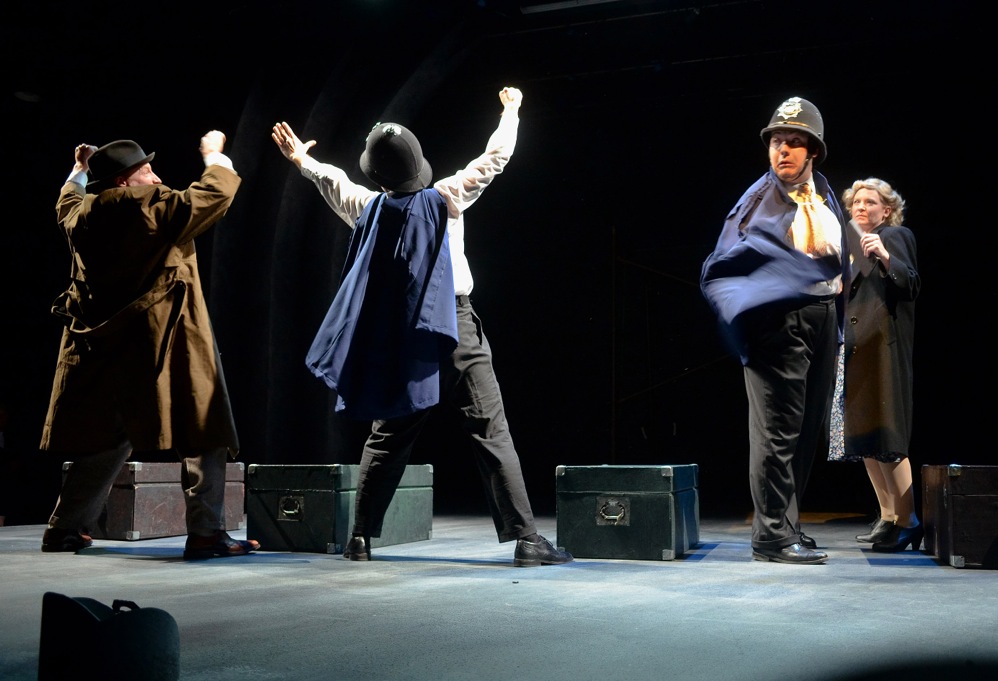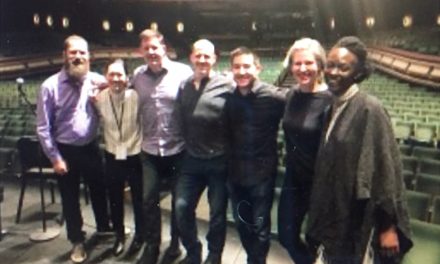By Jennifer Appleby Chu
Maurice Sendak once said a parent’s primary duty to a child is to take them as they are. Such a simple concept, but one that eludes so many people. It was playing in the back of my mind on infinite loop as I watched Frankenstein: Playing with Fire, directed by Michael Malek Najjar and playing at the University of Oregon’s Hope Theatre through November 24.
For the theater geeks out there, no, this is not the 2011 National Theatre adaptation, the one you might have read about or seen on the big screen. This script, penned by the late Barbara Field for the Guthrie Theater in Minneapolis, predates that one by over twenty years. It’s every bit as good, and UO has done it fine justice.
Field’s adaptation begins where everything ends, on an Arctic ice floe with the dying Frankenstein still doggedly pursuing his creation. When they call a brief truce, the Creature seizes the opportunity to ask the question that has been plaguing it since birth: “Why did you make me?” It will take many overdue conversations with the past and each other to get him an answer.
This cast includes not one but two Frankensteins, the youthful genius (Akash Dhruva) and the weary old wanderer (Henry Morton). They are accordingly haunted by two monsters: freshly reanimated Adam (Trevor Tarantino) and the Creature (Landon Kobz), his wiser, worldlier, sadder self.
There are no weak links in this quartet. All four are firmly committed to the intensity required of this show and ride its full emotional rollercoaster without ever descending into melodrama. It’s always difficult to tell stories of older characters with young adult actors, but the cast are still able to create believable continuity with their alternate selves. (The two Frankensteins once even managed to strike exactly the same expression in sync.)
Special note also goes to Isabel Holmes as Elizabeth, whose quiet, elegant confidence elevates a character that could easily come across as a helpless pawn.
This is script is a stripped-down interpretation, but it still requires plenty of onstage atmosphere to convey the passage of time and the many shifting settings. Scenic designer Graham Mauro has the biggest challenge here creating a design that can be chapel, laboratory, glacier, and more, all with very minimal set changes. The result is a kind of icy cathedral, or perhaps a fortress of solitude. Evocative sound and lighting by Ian Cash and Chase Foster-Adams complete the effect.
Although its science fiction elements usually receive the bulk of the attention, the most compelling part of this story was always that of Frankenstein the abusive parent. However he may argue semantics, the Creature is his child. It looks to him for comfort and affection, craves his approval, and cannot abandon him no matter how much torment he heaps upon it. Hurt people hurt other people, as Frankenstein finds out to his tragedy. He could have saved everyone, and the only thing he had to do was show his creation kindness. Apparently that was too challenging.
This is ultimately the real human core of Frankenstein, and perhaps secretly one of the real reasons it has endured. No matter how many times we retell the story, it never gets any less heartbreaking.
Frankenstein continues at the UO’s Hope Theatre
When: Evenings at 7:30 p.m. on Nov. 15-16 and 21-23; matinees at 2 p.m. on Nov. 17 and 24
Where: Hope Theatre, Miller Theater Complex, 1109 Old Campus Lane, Eugene
Tickets: $10 for adults, $8 for non-UO students, UO faculty and staff, people age 65 and older and youths under 18 years accompanying a ticketed adult. Unreserved tickets free to UO students with valid ID starting one hour before showtime; available online at tickets.uoregon.edu/UT








